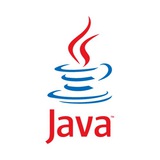tg-me.com/topJavaQuizQuestions/404
Last Update:
Understanding the Observer Pattern in Java
Hey everyone! 🚀 Today, I want to share my insights on the Observer Pattern, a common design pattern that helps manage communication between objects easily.
What is the Observer Pattern?
It's all about creating a one-to-many dependency where one object (the subject) notifies multiple observers about state changes. This is particularly useful for implementing distributed event-handling systems.
Key Benefits:
- Promotes loose coupling between objects 🏗️
- Enhances code flexibility and maintainability
- Facilitates real-time updates 🎉
How to Implement it?
Here's a simple example in Java:
interface Observer {
void update(String message);
}
class ConcreteObserver implements Observer {
public void update(String message) {
System.out.println("Received message: " + message);
}
}
class Subject {
private List<Observer> observers = new ArrayList<>();
public void attach(Observer observer) {
observers.add(observer);
}
public void notifyObservers(String message) {
for (Observer observer : observers) {
observer.update(message);
}
}
}
In this example, we define an
Observer interface and a Subject class that manages a list of observers.Remember, utilizing this pattern can greatly simplify complex systems by clarifying how components interact. Happy coding! 💻✨
BY Top Java Quiz Questions ☕️
Warning: Undefined variable $i in /var/www/tg-me/post.php on line 283
Share with your friend now:
tg-me.com/topJavaQuizQuestions/404
